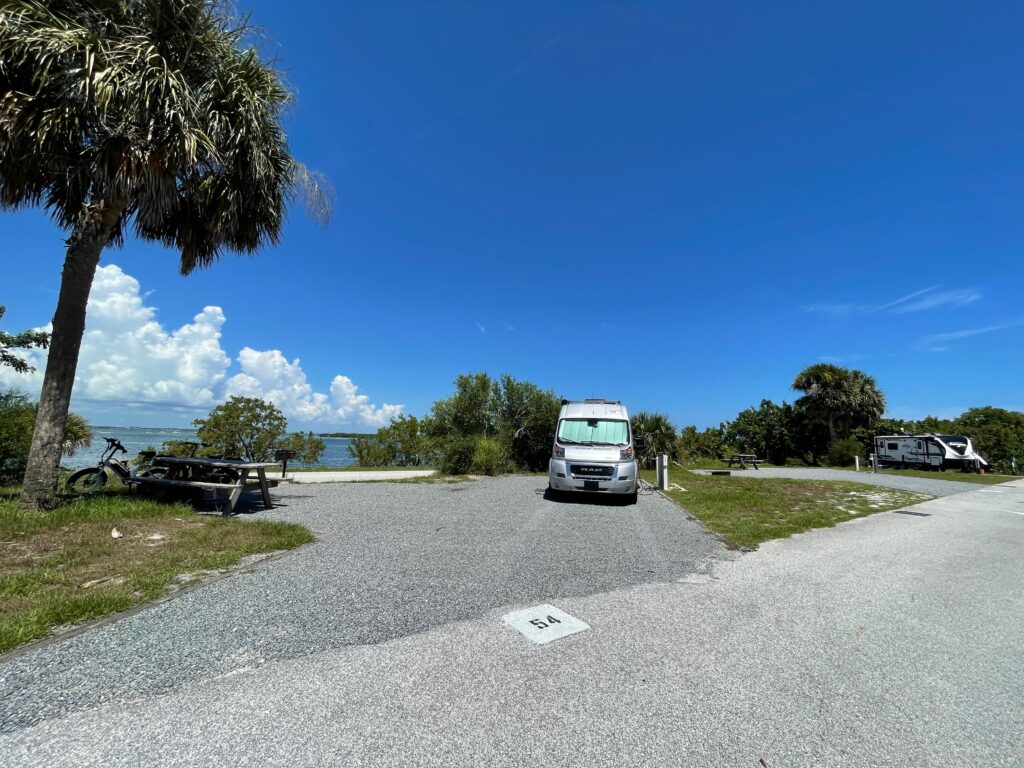
| Date: | Aug 19 – 21, 2022 |
| Location: | Sebastian Inlet State Park |
| Type: | water, 30 amp |
| Mileage: | 242 miles |
| Campsite: | Site #53, #54 |
| What did we learn? | Take time to explore the park |
| Would we go back? | Yes, and bring kayaks |
| Website: | https://reserve.floridastateparks.org/ |
We booked this campsite months ago. It is still light in Florida until about 8:00 pm. By the time we arrrived and checked in, it was dark. We can see why other campers say to arrive prior to dark. Glad we arrived on Friday night. As night fell a lightning show began with the thunderstorms to the west. It was such a great show.
We got up Saturday and were ready to explore. Definitely, an e-bike trip as the beach is a little far to walk to in the heat. As we rode along the inlet path, the park has signage on the various birds you can see. The signage is very informative. There are examples below. This park is definitely a fisherman’s paradise. The current screams in and out of the inlet and I am sure this brings a numerous amount of fish for the fishermen and ladies. Pelican Island National Wildlife Refuge is about 4 miles down the road so we went out to explore. On the way, I was scanning, like I always do, and saw a commotion in the water. We stopped and looked and it was about 10 or so manatees mating and stirring up the mud of the Indian River Lagoon.
The Indian River Lagoon has had some hard times in the past few years with the water being redirected to it from Lake Okeechobee. A few years ago there was a major problem with blue-green algae in the lagoon that starved the oxygen from the water and many species of animals died. The lagoon is still recovering but it does take time. The discharges from Lake Okeechobee have slowed but have not stopped. If you want to save the waters of Florida there are many good groups of people working to save the lagoon. Captains For Clean Water, MANG, and The Indian Riverkeepers are just some. Know who and what you are voting for.

Pelican Island NWR was the first Wildlife refuge in America established in 1903 by Theodore Roosevelt. In the late 1800s, and early 1900’s the fashion of the age was to have bird plumes adore your hats, hair, and clothes. Florida was a hotspot for hunters as many birds breed here in the winter in concentrated rookeries. The male birds’ feathers change as they go into breeding season. These are the plumes that the hunters desired. These hunters nearly wiped out all the birds. To read more about history see this article. The plumes are still widely sought after still. Wayne and I just read The Feather Thief by Kirk Wallace Johnson about a true theft of rare feathers.
The morning got away from us and we hurried back to the park to check out of 1 campsite and into the other. Once settled in we were asking what to do next. Search for some treasure of course. Since we are on the part of the Florida coast called the Treasure Coast. Some say that after a hurricane you can still find some of the old Spanish treasures on the beach from the Spanish ships that were wrecked here in 1715. A fleet of 11 Spanish ships was on their way back to Spain filled with gold bars, gold coins, silver coins, and jewelry for the queen when the winds of a hurricane sunk them right offshore. The McLarty Treasure Museum has artifacts from the survivors and displays about the fatal voyage. There is a film that explains why and what they were carrying and how the treasure was found. It was really interesting. Just when you think Florida has no history you stumble upon it. The museum is located about 2 miles down the road and there is a $2 entrance fee to the museum, well worth the cost of admission.
Wildlife encounters 3 bunnies, gopher tortoise, blue heron, osprey, brown pelican, manatees mating, yellow or black-crowned night heron, wood stork, spotted eagle ray, numerous baitfish
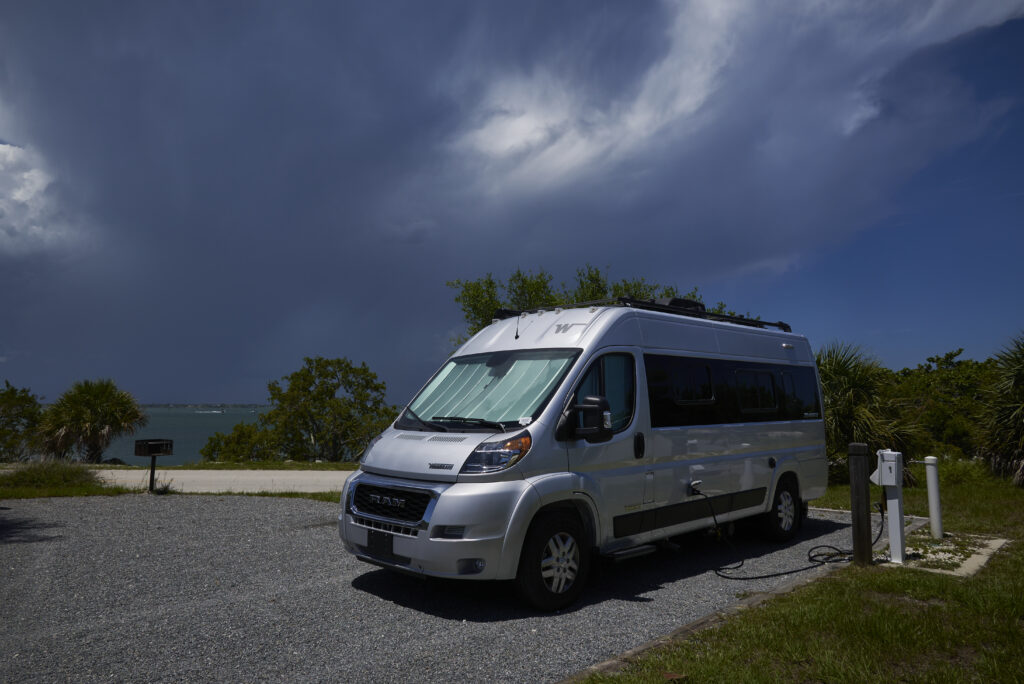
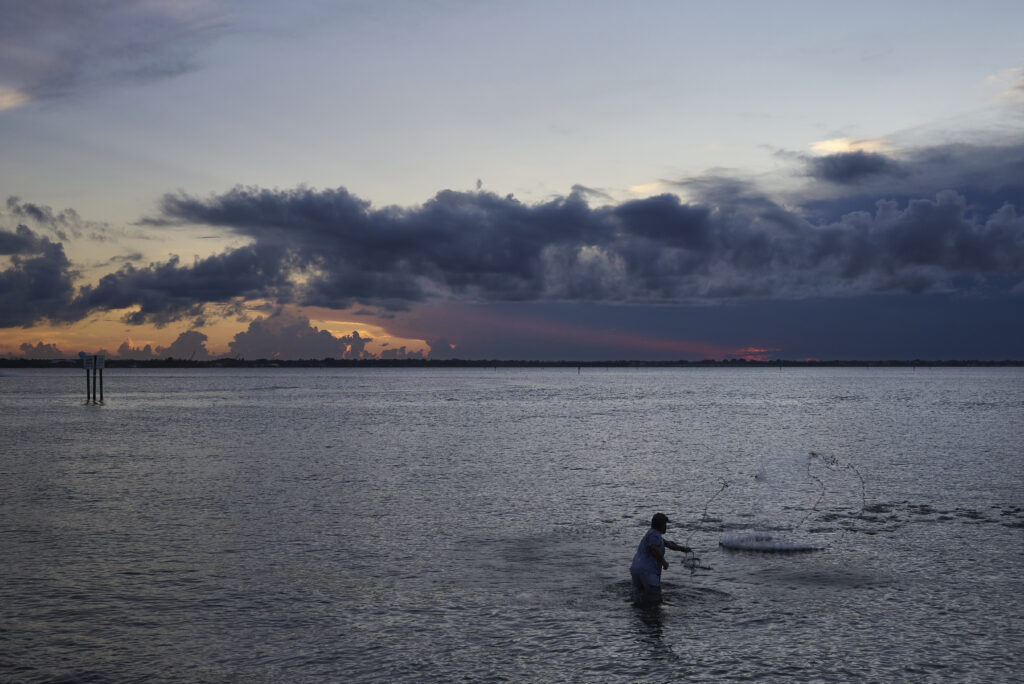
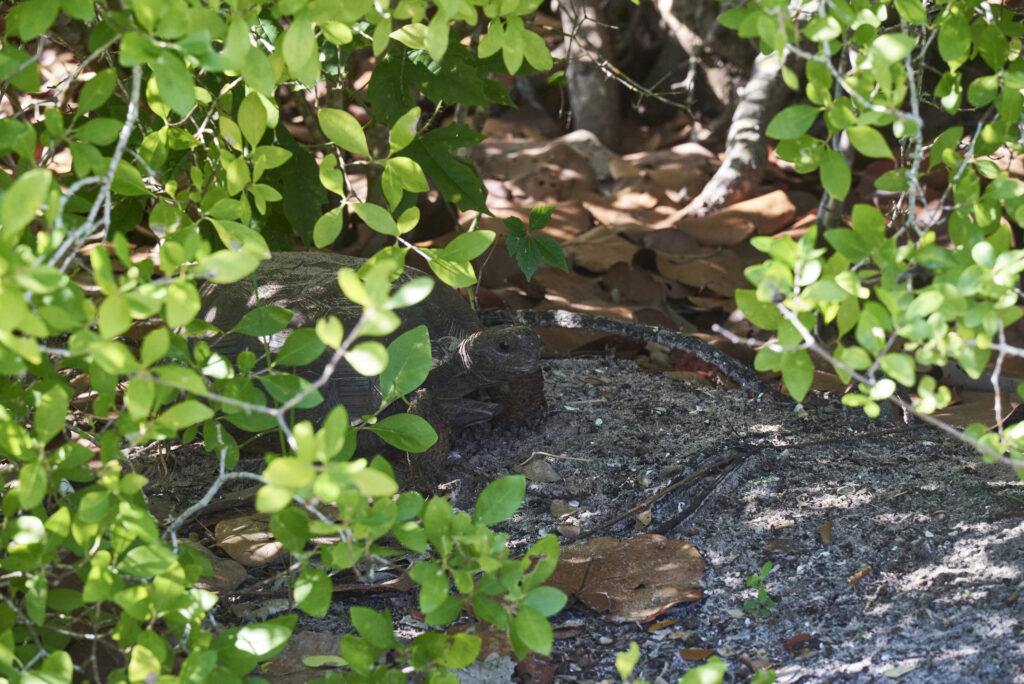
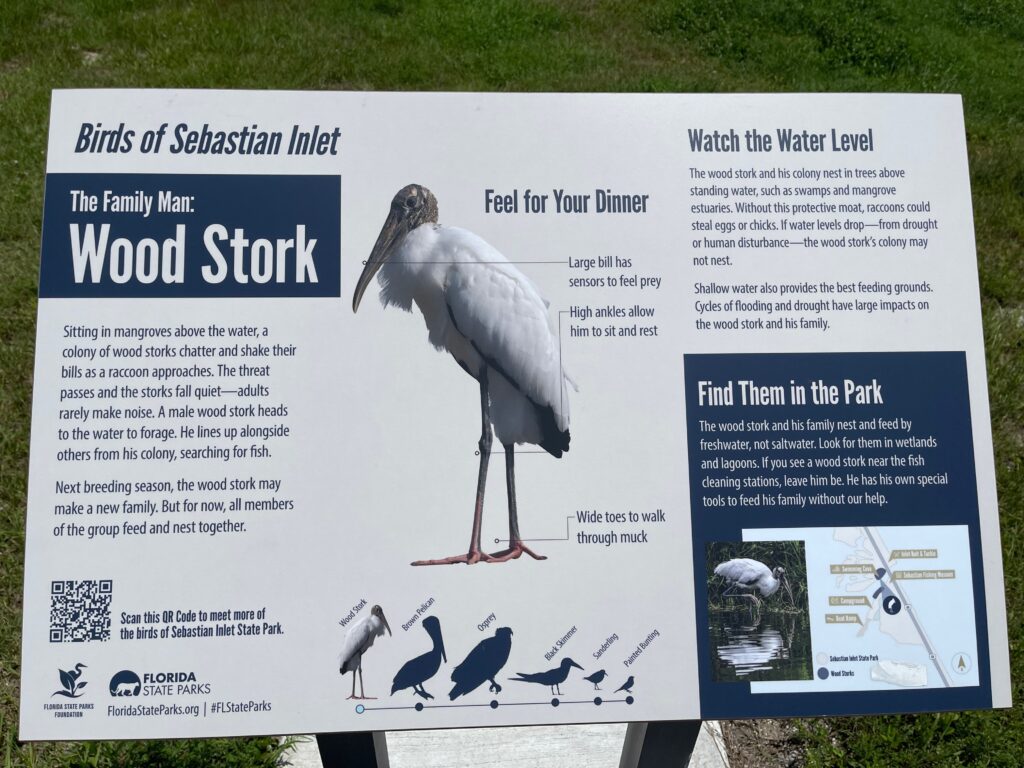

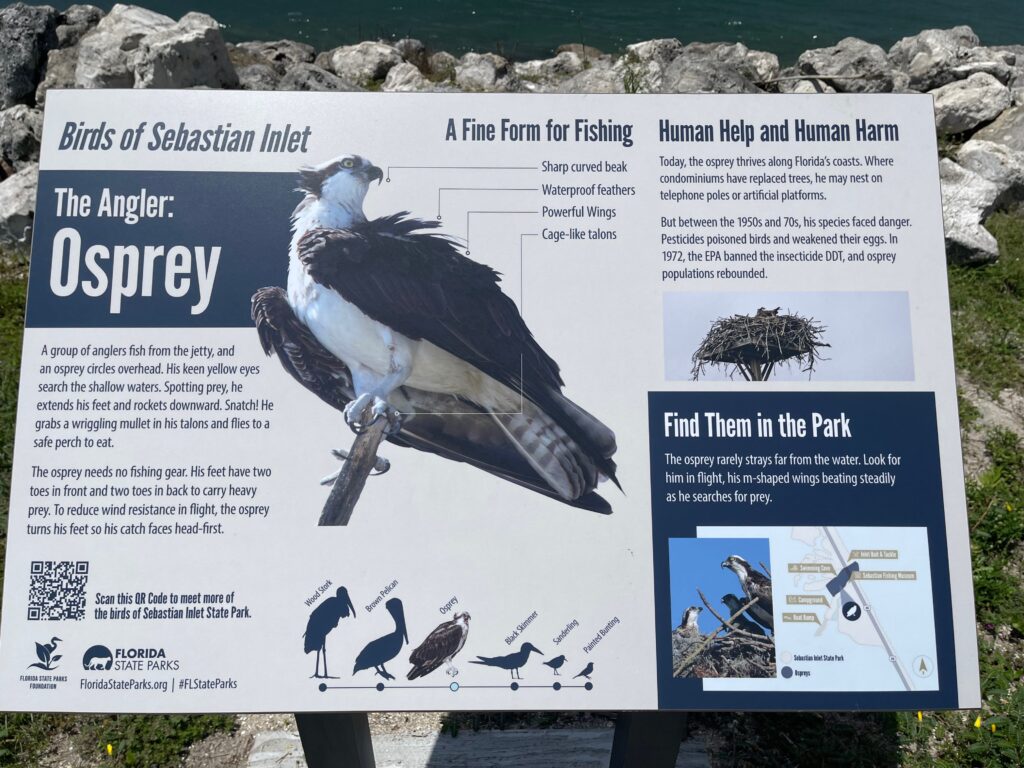
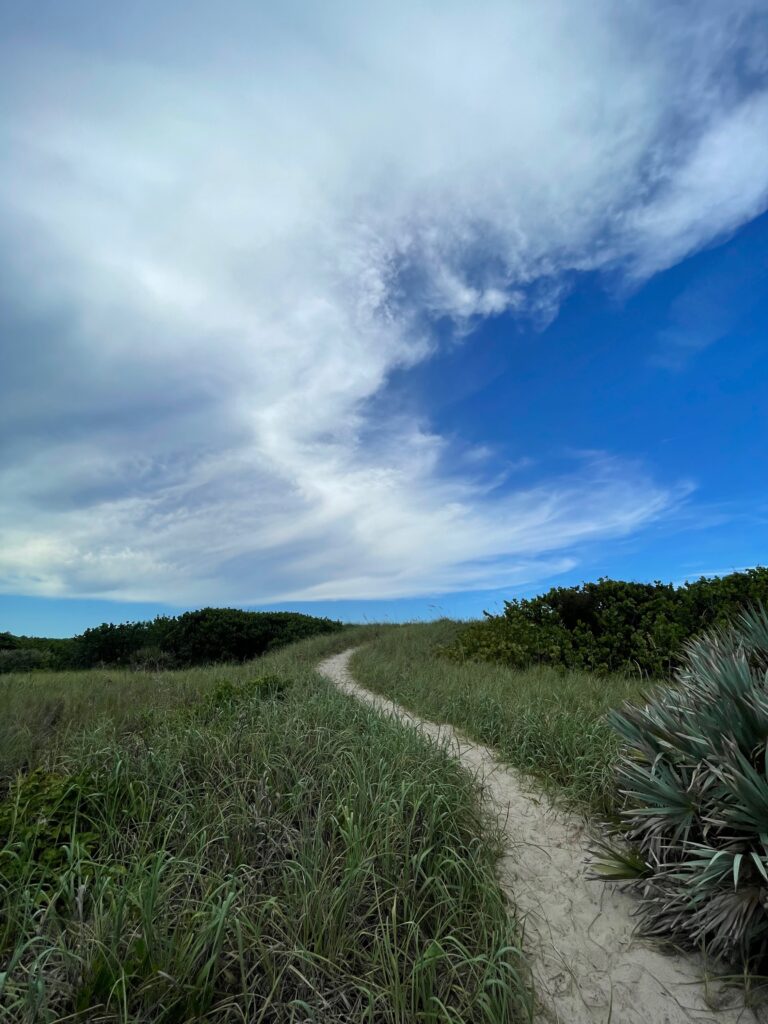
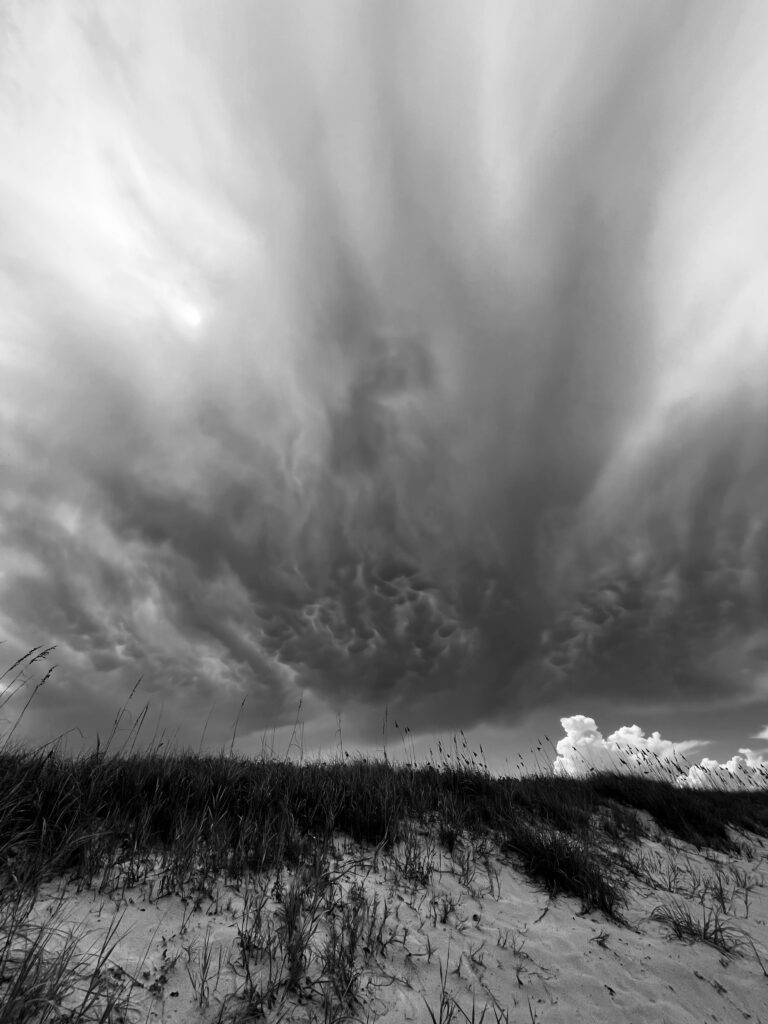
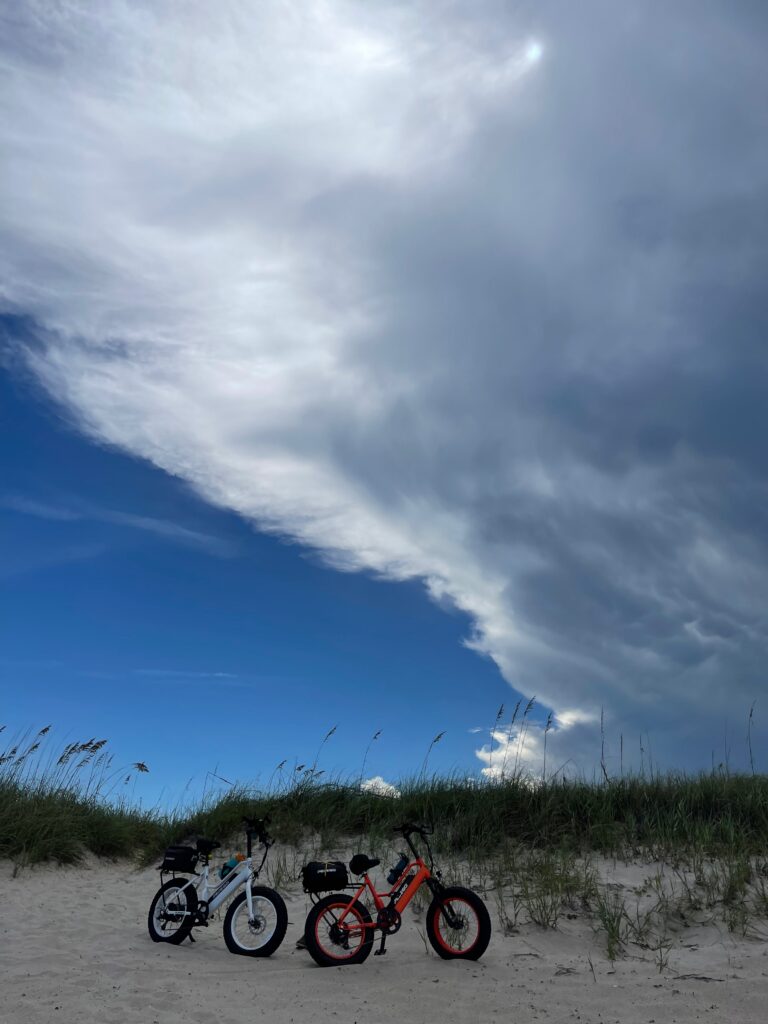
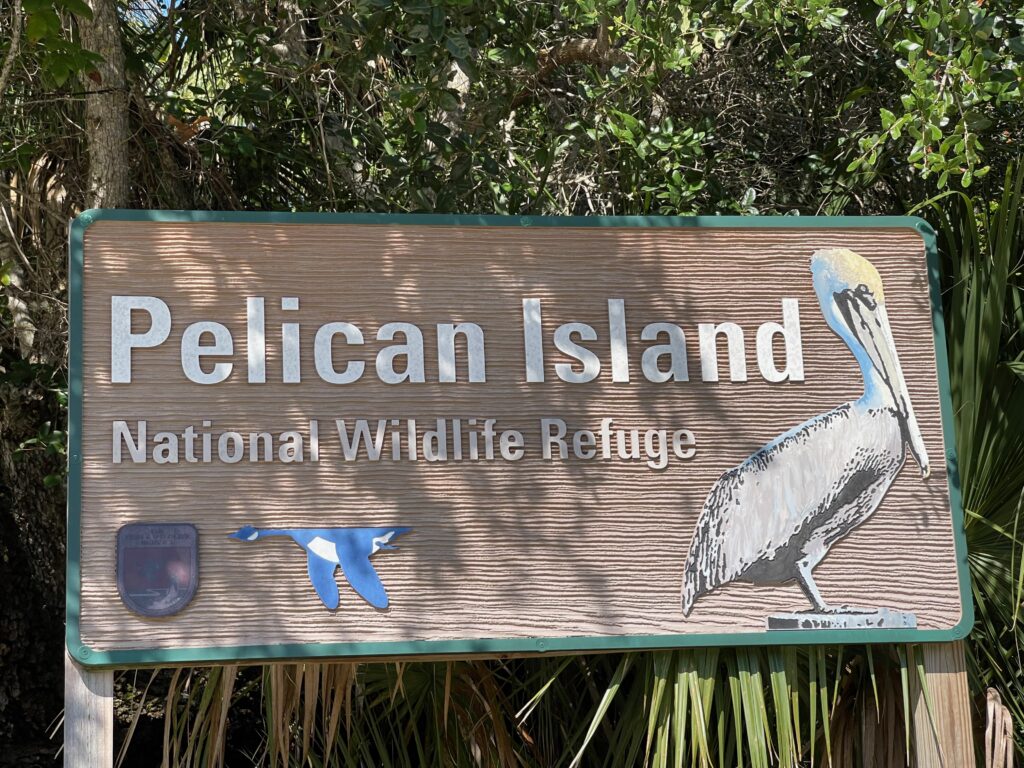
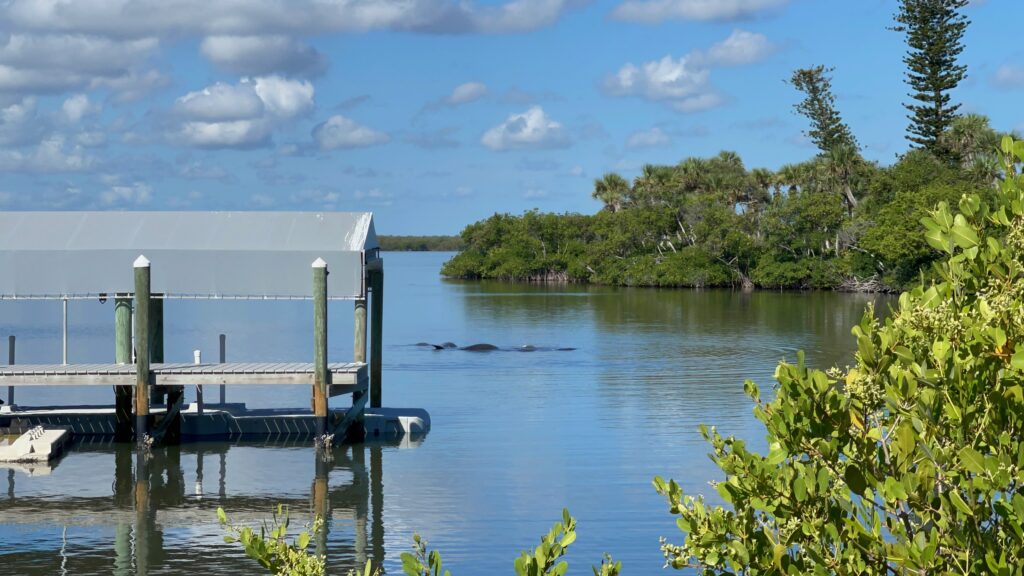
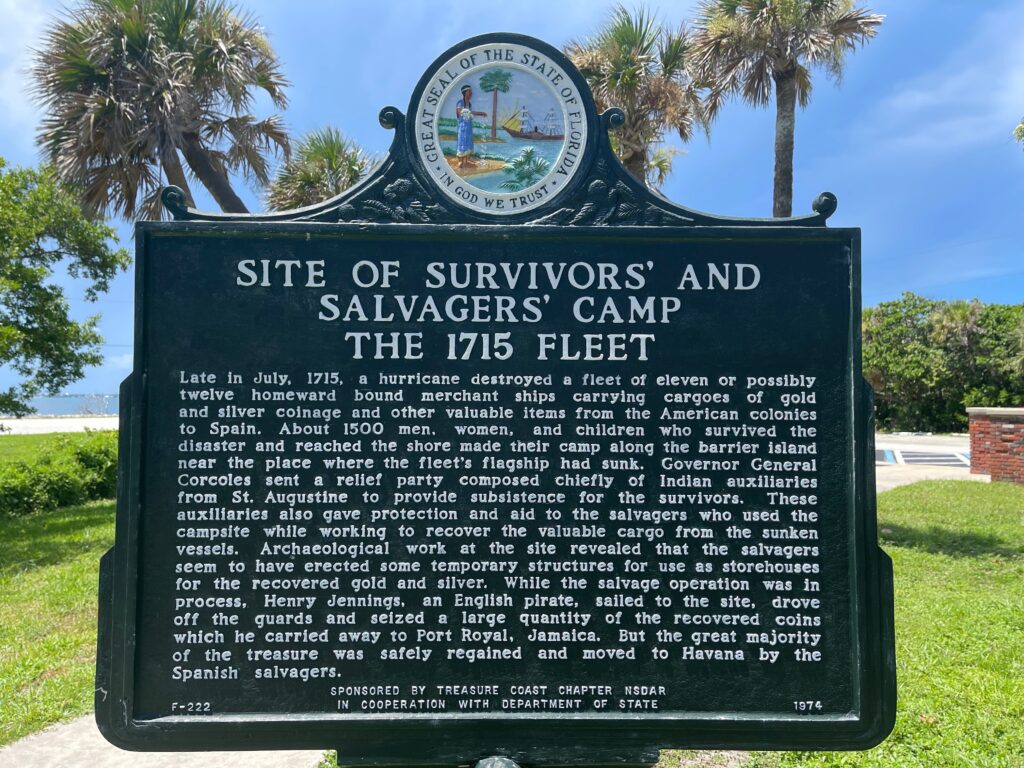
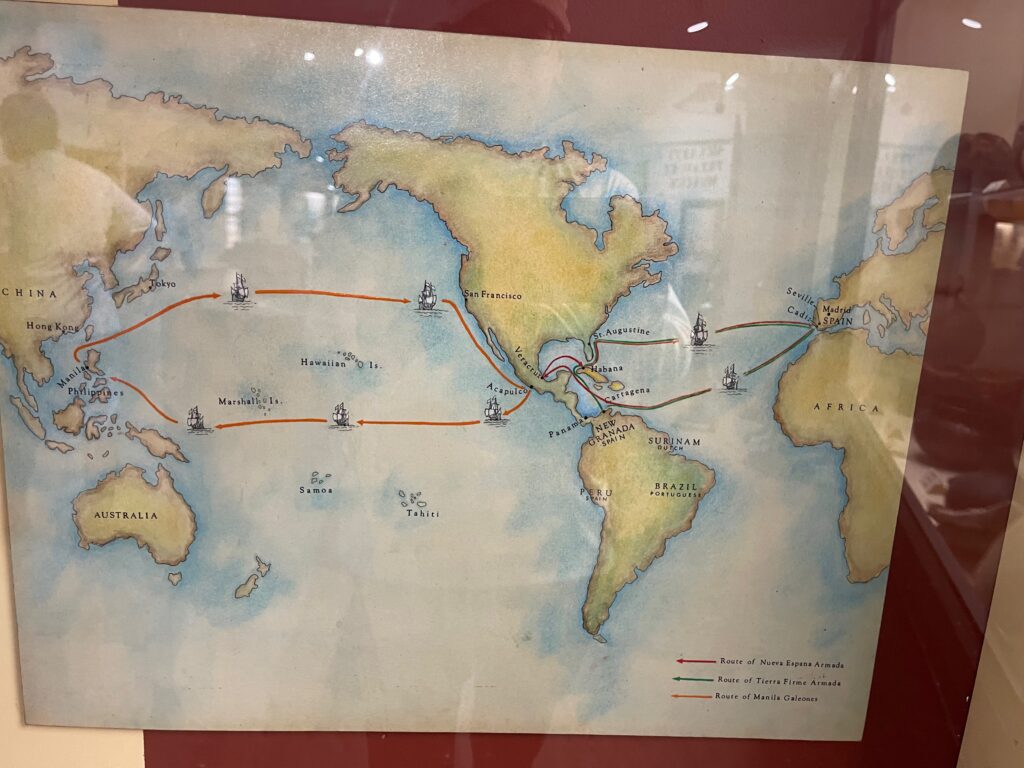
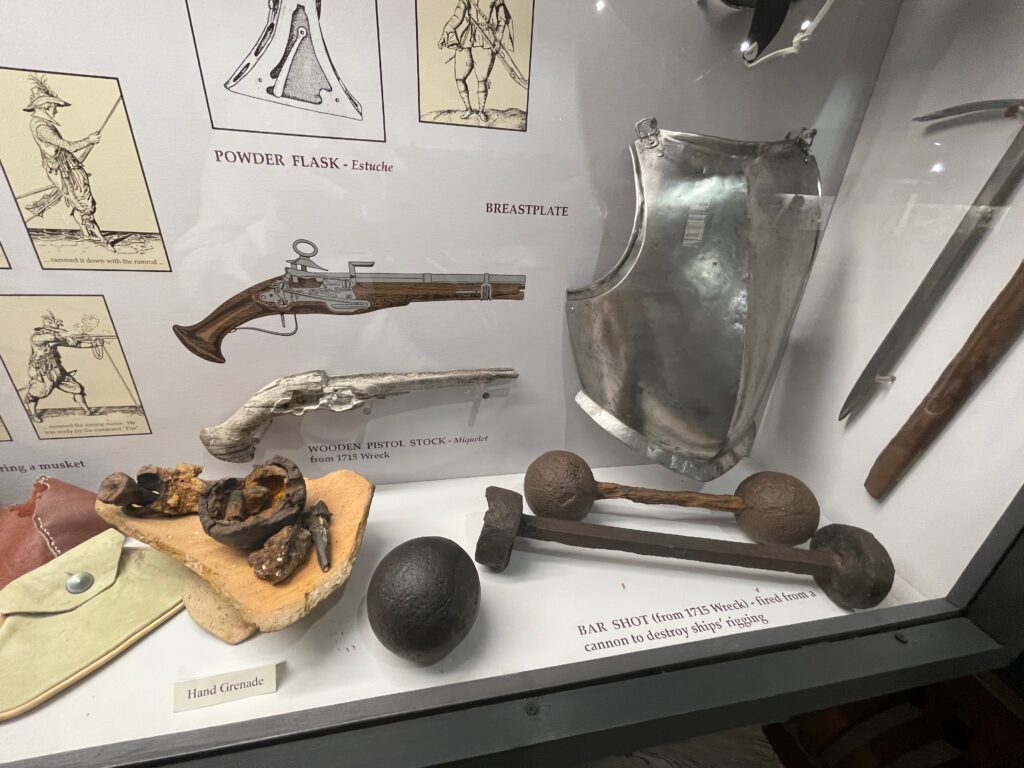
NOTE: All photos and videos are the property of Wayne and Margaret Shoemake. If you want to use them, please click on the contact us page and email us.